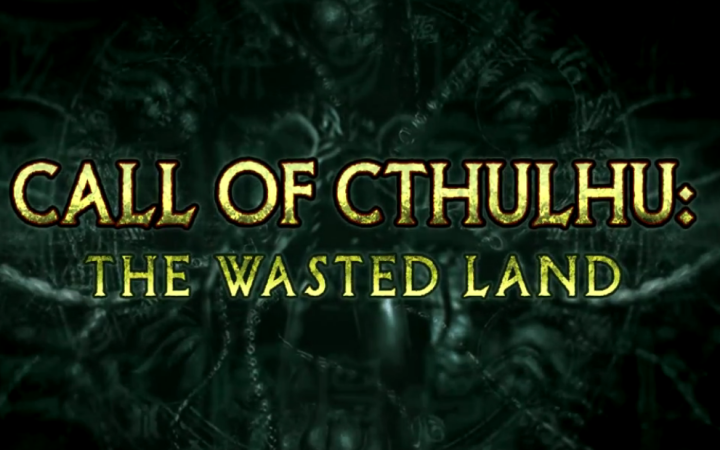Call of Cthulhu: The Wasted Land has some interesting game mechanics, but like the big, tentacled one himself, there are some things about it that may very well drive you to the brink of madness. A fantastic premise, stellar use of the Cthulhu 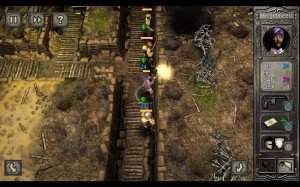 mythos, great integration of the pen-and-paper version of Call of Cthulhu, and a very satisfactory turn-based strategy system are, unfortunately, marred by issues caused by the jump from iOS to PC. If you’re buying it for your iPad, this is a very easy recommendation to make. If you’re looking at the PC version, you may want to think it over.
mythos, great integration of the pen-and-paper version of Call of Cthulhu, and a very satisfactory turn-based strategy system are, unfortunately, marred by issues caused by the jump from iOS to PC. If you’re buying it for your iPad, this is a very easy recommendation to make. If you’re looking at the PC version, you may want to think it over.
The Wasted Land is based on the long running and popular Call of Cthulhu pen-and-paper game, a great choice for tabletop role-players fascinated with HP Lovecraft’s tales of madness, otherworldly creatures, and supernatural horror. In both the pen-and-paper version and The Wasted Land, the player controls a team of investigators, searching out the secrets of the “Things That Should Not Be Known By Man”, which seems to be the catch-all phrase for those trying to uncover these secrets. As a big fan of both Lovecraft’s writing and of the RPG, The Wasted Land does a fantastic job of catering to fans with plenty of hints and nods to the original works.
The catch is, 90% of Cthulhu material (and therefore, 90% of Call of Cthulhu scenarios) takes place in small, New England communities like Arkham and the surrounding area. Red Wasp Design decides to do something a little different and transposes the entirety of The Wasted Land into a setting with a very different kind of madness and terror: World War I. It’s a fantastic choice of setting that’s rarely used in video games or Lovecraftian works. The senseless bloodshed and horror of WWI provide a different, yet still familiar, backdrop to the incomprehensible fear of the unexplainable. Even though the plot is the familiar “Germans seek out occult powers to win the war” narrative, the addition of Lovecraft’s otherworldly creatures makes it a lot darker.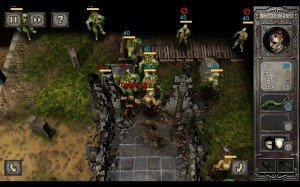
It’s also interesting how the setting informs the game design. While most turn-based strategies separate movement and attacking into two commands, everything each character does in The Wasted Land comes from the same pool of action points. This means that there are very few instances of being able to both move and shoot, which encourages the player to use trench warfare to get an edge. To make things even closer to actual WWI strategy, the battlefields are littered with trenches that provide cover and defense bonuses, and hazardous terrain that keeps soldiers from rushing ahead. With these two elements in play, it means you quite literally need to use trench warfare to advance; one must sit tight and take potshots at the advancing army until you see a safe break to run across. Even the story is wisely integrated into the setting, as the reputation of WWI as the bloodiest war ever fought is a key plot point.
As for the game itself, The Wasted Land is your usual turn-based warfare game. It’s surprisingly deep, and while it doesn’t follow the pen-and-paper rules to the letter, it still captures enough of the feeling to please old fans and draw in new ones. You generally have six characters at a time, each of which can be improved through a shared XP pool between levels. You need to level up four major attributes and a handful of skills. There’s a wide variety of weapon types, but your characters are limited to carrying just two onto the field. You can also bring other helpful gadgets, like gas masks and psychosis 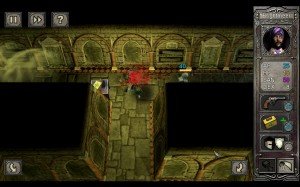 manuals, to keep your soldiers sane and mustard-gas free. As mentioned before, each character can do whatever they want on your turn, only limited by their action point pool. Of course, it wouldn’t be Lovecraft without insanity, which comes in the form of the pen-and-paper’s sanity point system. Every time you confront “That Which Cannot Be Comprehended By Man”, you lose a certain amount of sanity. Lose it all and your soldier will be gripped with some form of mania, ranging from fearful paralysis to berserk rampaging.
manuals, to keep your soldiers sane and mustard-gas free. As mentioned before, each character can do whatever they want on your turn, only limited by their action point pool. Of course, it wouldn’t be Lovecraft without insanity, which comes in the form of the pen-and-paper’s sanity point system. Every time you confront “That Which Cannot Be Comprehended By Man”, you lose a certain amount of sanity. Lose it all and your soldier will be gripped with some form of mania, ranging from fearful paralysis to berserk rampaging.
It’s standard stuff, with Overwatch being the only real wrinkle to the formula. With the Overwatch system, if you have enough action points during an enemy’s turn, you can attack them freely if they step into range. Counter mechanics are nothing new, but with Overwatch reinforces the trench warfare tactics and importance of staying put. The system may be your typical RPG/strategy framework, but it’s still a ton of fun, and the importance of defensive positions makes it different enough to pique your interest.
On iOS, the game is basically unmatched in terms of depth and strategy. On PC, the turn-based strategy field is still sparse, but offers a bit more choice. Unfortunately, the PC port has a few problems that stem from the iOS design. The camera controls are extremely sensitive, as they’re designed for a finger swipe, not clicking and dragging. While it is possible to get used to the controls, it remains fairly awkward. The same goes for selecting units and ordering attacks. Obviously, the iOS version only has one method of input, which means everything is controlled with just your left mouse, despite the fact that many actions could have (and should have) been delegated to other buttons or keys. For example, to attack using the PC version, you need to click on which soldier you want to use, then click and hold down the mouse over your target. 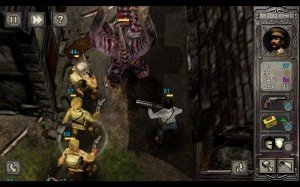 Fairly often, you will select the bad guy instead, attack the wrong bad guy, or order your soldier to move next to the baddie instead of blowing his tentacled face off. There are other examples too, like the unintuitive shop system that makes perfect sense on a touch screen, but proves clunky and unresponsive with a mouse. It’s clear the PC version is pretty much a direct transfer from the iOS version, but there’s more problems than one would expect from this, and the lack of optimization can cause a fair amount of frustration.
Fairly often, you will select the bad guy instead, attack the wrong bad guy, or order your soldier to move next to the baddie instead of blowing his tentacled face off. There are other examples too, like the unintuitive shop system that makes perfect sense on a touch screen, but proves clunky and unresponsive with a mouse. It’s clear the PC version is pretty much a direct transfer from the iOS version, but there’s more problems than one would expect from this, and the lack of optimization can cause a fair amount of frustration.
There’s a few other nitpicks: the graphics don’t look great and fall squarely into the PS1 era, and the short length of the campaign, with just nine missions, is a pretty major flaw. Again, both things would be glossed over on a phone, but stand out like a sore thumb on the PC. There are also a few quirks that might bug some gamers, like the campy (yet unintentionally hilarious) dialogue or ham-fisted exposition. But there’s a lot to love about the presentation as well, like the excellent sound design. The main menu has a fantastically spooky period-piece that sounds like it’s playing from a warped record on “The Deep One’s” personal phonograph. We jumped the first time we heard the death screams emitted from one of the creatures of Shub-Niggurath, The Black Goat With A Thousand Young.
As a Cthulhu Mythos fan, you will really enjoy your time with the game and could really do a lot worse. I would highly recommend it to anyone with an iPad, as the score would easily be bumped up by two points if the iOS version was reviewed, especially since there really aren’t a lot of games for the platform with this amount of depth and strategy. But on PC, the lack of platform-specific tweaking keeps us from fully recommending The Wasted Land. If you love everything Lovecraft or are desperate for a new squad-based strategy game, then you could probably overlook the frustrating aspects, but less committed gamers likely won’t have the same level of commitment.
Final Verdict: Ph’nglui mglw’nafh Cthulhu R’lyeh wgah’nagl fhtagn!
Rating: 









This review is based on the PC version of Call of Cthulhu: The Wasted Land provided by Red Wasp Designs and Intel AppUp.

